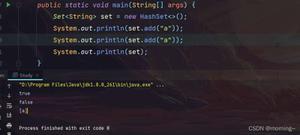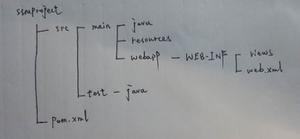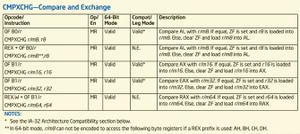java集合之vector容器

学完ArrayList和LinkedList之后,我们接着学习Vector。
第1部分 Vector介绍
第2部分 Vector数据结构
第3部分 Vector源码解析(基于JDK1.6.0_45)
第4部分 Vector遍历方式
第5部分 Vector示例
转载请注明出处:http://www.cnblogs.com/skywang12345/p/3308833.html
第1部分 Vector介绍
Vector简介
Vector 是矢量队列,它是JDK1.0版本添加的类。继承于AbstractList,实现了List, RandomAccess, Cloneable这些接口。
Vector 继承了AbstractList,实现了List;所以,它是一个队列,支持相关的添加、删除、修改、遍历等功能。
Vector 实现了RandmoAccess接口,即提供了随机访问功能。RandmoAccess是java中用来被List实现,为List提供快速访问功能的。在Vector中,我们即可以通过元素的序号快速获取元素对象;这就是快速随机访问。
Vector 实现了Cloneable接口,即实现clone()函数。它能被克隆。
和ArrayList不同,Vector中的操作是线程安全的。
Vector的构造函数
Vector共有4个构造函数// 默认构造函数
Vector()
// capacity是Vector的默认容量大小。当由于增加数据导致容量增加时,每次容量会增加一倍。
Vector(int capacity)
// capacity是Vector的默认容量大小,capacityIncrement是每次Vector容量增加时的增量值。
Vector(int capacity, int capacityIncrement)
// 创建一个包含collection的Vector
Vector(Collection<? extends E> collection)
Vector的API
synchronized boolean add(E object)void add(int location, E object)
synchronized boolean addAll(Collection<? extends E> collection)
synchronized boolean addAll(int location, Collection<? extends E> collection)
synchronized void addElement(E object)
synchronized int capacity()
void clear()
synchronized Object clone()
boolean contains(Object object)
synchronized boolean containsAll(Collection<?> collection)
synchronized void copyInto(Object[] elements)
synchronized E elementAt(int location)
Enumeration<E> elements()
synchronized void ensureCapacity(int minimumCapacity)
synchronized boolean equals(Object object)
synchronized E firstElement()
E get(int location)
synchronized int hashCode()
synchronized int indexOf(Object object, int location)
int indexOf(Object object)
synchronized void insertElementAt(E object, int location)
synchronized boolean isEmpty()
synchronized E lastElement()
synchronized int lastIndexOf(Object object, int location)
synchronized int lastIndexOf(Object object)
synchronized E remove(int location)
boolean remove(Object object)
synchronized boolean removeAll(Collection<?> collection)
synchronized void removeAllElements()
synchronized boolean removeElement(Object object)
synchronized void removeElementAt(int location)
synchronized boolean retainAll(Collection<?> collection)
synchronized E set(int location, E object)
synchronized void setElementAt(E object, int location)
synchronized void setSize(int length)
synchronized int size()
synchronized List<E> subList(int start, int end)
synchronized <T> T[] toArray(T[] contents)
synchronized Object[] toArray()
synchronized String toString()
synchronized void trimToSize()
第2部分 Vector数据结构
Vector的继承关系
java.lang.Object↳ java.util.AbstractCollection<E>
↳ java.util.AbstractList<E>
↳ java.util.Vector<E>
public class Vector<E>
extends AbstractList<E>
implements List<E>, RandomAccess, Cloneable, java.io.Serializable {}
Vector与Collection关系如下图:
Vector的数据结构和ArrayList差不多,它包含了3个成员变量:elementData , elementCount, capacityIncrement。
(01) elementData 是"Object[]类型的数组",它保存了添加到Vector中的元素。elementData是个动态数组,如果初始化Vector时,没指定动态数组的>大小,则使用默认大小10。随着Vector中元素的增加,Vector的容量也会动态增长,capacityIncrement是与容量增长相关的增长系数,具体的增长方式,请参考源码分析中的ensureCapacity()函数。
(02) elementCount 是动态数组的实际大小。
(03) capacityIncrement 是动态数组的增长系数。如果在创建Vector时,指定了capacityIncrement的大小;则,每次当Vector中动态数组容量增加时>,增加的大小都是capacityIncrement。
第3部分 Vector源码解析(基于JDK1.6.0_45)
为了更了解Vector的原理,下面对Vector源码代码作出分析。
1 package java.util;2
3 public class Vector<E>
4 extends AbstractList<E>
5 implements List<E>, RandomAccess, Cloneable, java.io.Serializable
6 {
7
8 // 保存Vector中数据的数组
9 protected Object[] elementData;
10
11 // 实际数据的数量
12 protected int elementCount;
13
14 // 容量增长系数
15 protected int capacityIncrement;
16
17 // Vector的序列版本号
18 private static final long serialVersionUID = -2767605614048989439L;
19
20 // Vector构造函数。默认容量是10。
21 public Vector() {
22 this(10);
23 }
24
25 // 指定Vector容量大小的构造函数
26 public Vector(int initialCapacity) {
27 this(initialCapacity, 0);
28 }
29
30 // 指定Vector"容量大小"和"增长系数"的构造函数
31 public Vector(int initialCapacity, int capacityIncrement) {
32 super();
33 if (initialCapacity < 0)
34 throw new IllegalArgumentException("Illegal Capacity: "+
35 initialCapacity);
36 // 新建一个数组,数组容量是initialCapacity
37 this.elementData = new Object[initialCapacity];
38 // 设置容量增长系数
39 this.capacityIncrement = capacityIncrement;
40 }
41
42 // 指定集合的Vector构造函数。
43 public Vector(Collection<? extends E> c) {
44 // 获取“集合(c)”的数组,并将其赋值给elementData
45 elementData = c.toArray();
46 // 设置数组长度
47 elementCount = elementData.length;
48 // c.toArray might (incorrectly) not return Object[] (see 6260652)
49 if (elementData.getClass() != Object[].class)
50 elementData = Arrays.copyOf(elementData, elementCount, Object[].class);
51 }
52
53 // 将数组Vector的全部元素都拷贝到数组anArray中
54 public synchronized void copyInto(Object[] anArray) {
55 System.arraycopy(elementData, 0, anArray, 0, elementCount);
56 }
57
58 // 将当前容量值设为 =实际元素个数
59 public synchronized void trimToSize() {
60 modCount++;
61 int oldCapacity = elementData.length;
62 if (elementCount < oldCapacity) {
63 elementData = Arrays.copyOf(elementData, elementCount);
64 }
65 }
66
67 // 确认“Vector容量”的帮助函数
68 private void ensureCapacityHelper(int minCapacity) {
69 int oldCapacity = elementData.length;
70 // 当Vector的容量不足以容纳当前的全部元素,增加容量大小。
71 // 若 容量增量系数>0(即capacityIncrement>0),则将容量增大当capacityIncrement
72 // 否则,将容量增大一倍。
73 if (minCapacity > oldCapacity) {
74 Object[] oldData = elementData;
75 int newCapacity = (capacityIncrement > 0) ?
76 (oldCapacity + capacityIncrement) : (oldCapacity * 2);
77 if (newCapacity < minCapacity) {
78 newCapacity = minCapacity;
79 }
80 elementData = Arrays.copyOf(elementData, newCapacity);
81 }
82 }
83
84 // 确定Vector的容量。
85 public synchronized void ensureCapacity(int minCapacity) {
86 // 将Vector的改变统计数+1
87 modCount++;
88 ensureCapacityHelper(minCapacity);
89 }
90
91 // 设置容量值为 newSize
92 public synchronized void setSize(int newSize) {
93 modCount++;
94 if (newSize > elementCount) {
95 // 若 "newSize 大于 Vector容量",则调整Vector的大小。
96 ensureCapacityHelper(newSize);
97 } else {
98 // 若 "newSize 小于/等于 Vector容量",则将newSize位置开始的元素都设置为null
99 for (int i = newSize ; i < elementCount ; i++) {
100 elementData[i] = null;
101 }
102 }
103 elementCount = newSize;
104 }
105
106 // 返回“Vector的总的容量”
107 public synchronized int capacity() {
108 return elementData.length;
109 }
110
111 // 返回“Vector的实际大小”,即Vector中元素个数
112 public synchronized int size() {
113 return elementCount;
114 }
115
116 // 判断Vector是否为空
117 public synchronized boolean isEmpty() {
118 return elementCount == 0;
119 }
120
121 // 返回“Vector中全部元素对应的Enumeration”
122 public Enumeration<E> elements() {
123 // 通过匿名类实现Enumeration
124 return new Enumeration<E>() {
125 int count = 0;
126
127 // 是否存在下一个元素
128 public boolean hasMoreElements() {
129 return count < elementCount;
130 }
131
132 // 获取下一个元素
133 public E nextElement() {
134 synchronized (Vector.this) {
135 if (count < elementCount) {
136 return (E)elementData[count++];
137 }
138 }
139 throw new NoSuchElementException("Vector Enumeration");
140 }
141 };
142 }
143
144 // 返回Vector中是否包含对象(o)
145 public boolean contains(Object o) {
146 return indexOf(o, 0) >= 0;
147 }
148
149
150 // 从index位置开始向后查找元素(o)。
151 // 若找到,则返回元素的索引值;否则,返回-1
152 public synchronized int indexOf(Object o, int index) {
153 if (o == null) {
154 // 若查找元素为null,则正向找出null元素,并返回它对应的序号
155 for (int i = index ; i < elementCount ; i++)
156 if (elementData[i]==null)
157 return i;
158 } else {
159 // 若查找元素不为null,则正向找出该元素,并返回它对应的序号
160 for (int i = index ; i < elementCount ; i++)
161 if (o.equals(elementData[i]))
162 return i;
163 }
164 return -1;
165 }
166
167 // 查找并返回元素(o)在Vector中的索引值
168 public int indexOf(Object o) {
169 return indexOf(o, 0);
170 }
171
172 // 从后向前查找元素(o)。并返回元素的索引
173 public synchronized int lastIndexOf(Object o) {
174 return lastIndexOf(o, elementCount-1);
175 }
176
177 // 从后向前查找元素(o)。开始位置是从前向后的第index个数;
178 // 若找到,则返回元素的“索引值”;否则,返回-1。
179 public synchronized int lastIndexOf(Object o, int index) {
180 if (index >= elementCount)
181 throw new IndexOutOfBoundsException(index + " >= "+ elementCount);
182
183 if (o == null) {
184 // 若查找元素为null,则反向找出null元素,并返回它对应的序号
185 for (int i = index; i >= 0; i--)
186 if (elementData[i]==null)
187 return i;
188 } else {
189 // 若查找元素不为null,则反向找出该元素,并返回它对应的序号
190 for (int i = index; i >= 0; i--)
191 if (o.equals(elementData[i]))
192 return i;
193 }
194 return -1;
195 }
196
197 // 返回Vector中index位置的元素。
198 // 若index月结,则抛出异常
199 public synchronized E elementAt(int index) {
200 if (index >= elementCount) {
201 throw new ArrayIndexOutOfBoundsException(index + " >= " + elementCount);
202 }
203
204 return (E)elementData[index];
205 }
206
207 // 获取Vector中的第一个元素。
208 // 若失败,则抛出异常!
209 public synchronized E firstElement() {
210 if (elementCount == 0) {
211 throw new NoSuchElementException();
212 }
213 return (E)elementData[0];
214 }
215
216 // 获取Vector中的最后一个元素。
217 // 若失败,则抛出异常!
218 public synchronized E lastElement() {
219 if (elementCount == 0) {
220 throw new NoSuchElementException();
221 }
222 return (E)elementData[elementCount - 1];
223 }
224
225 // 设置index位置的元素值为obj
226 public synchronized void setElementAt(E obj, int index) {
227 if (index >= elementCount) {
228 throw new ArrayIndexOutOfBoundsException(index + " >= " +
229 elementCount);
230 }
231 elementData[index] = obj;
232 }
233
234 // 删除index位置的元素
235 public synchronized void removeElementAt(int index) {
236 modCount++;
237 if (index >= elementCount) {
238 throw new ArrayIndexOutOfBoundsException(index + " >= " +
239 elementCount);
240 } else if (index < 0) {
241 throw new ArrayIndexOutOfBoundsException(index);
242 }
243
244 int j = elementCount - index - 1;
245 if (j > 0) {
246 System.arraycopy(elementData, index + 1, elementData, index, j);
247 }
248 elementCount--;
249 elementData[elementCount] = null; /* to let gc do its work */
250 }
251
252 // 在index位置处插入元素(obj)
253 public synchronized void insertElementAt(E obj, int index) {
254 modCount++;
255 if (index > elementCount) {
256 throw new ArrayIndexOutOfBoundsException(index
257 + " > " + elementCount);
258 }
259 ensureCapacityHelper(elementCount + 1);
260 System.arraycopy(elementData, index, elementData, index + 1, elementCount - index);
261 elementData[index] = obj;
262 elementCount++;
263 }
264
265 // 将“元素obj”添加到Vector末尾
266 public synchronized void addElement(E obj) {
267 modCount++;
268 ensureCapacityHelper(elementCount + 1);
269 elementData[elementCount++] = obj;
270 }
271
272 // 在Vector中查找并删除元素obj。
273 // 成功的话,返回true;否则,返回false。
274 public synchronized boolean removeElement(Object obj) {
275 modCount++;
276 int i = indexOf(obj);
277 if (i >= 0) {
278 removeElementAt(i);
279 return true;
280 }
281 return false;
282 }
283
284 // 删除Vector中的全部元素
285 public synchronized void removeAllElements() {
286 modCount++;
287 // 将Vector中的全部元素设为null
288 for (int i = 0; i < elementCount; i++)
289 elementData[i] = null;
290
291 elementCount = 0;
292 }
293
294 // 克隆函数
295 public synchronized Object clone() {
296 try {
297 Vector<E> v = (Vector<E>) super.clone();
298 // 将当前Vector的全部元素拷贝到v中
299 v.elementData = Arrays.copyOf(elementData, elementCount);
300 v.modCount = 0;
301 return v;
302 } catch (CloneNotSupportedException e) {
303 // this shouldn't happen, since we are Cloneable
304 throw new InternalError();
305 }
306 }
307
308 // 返回Object数组
309 public synchronized Object[] toArray() {
310 return Arrays.copyOf(elementData, elementCount);
311 }
312
313 // 返回Vector的模板数组。所谓模板数组,即可以将T设为任意的数据类型
314 public synchronized <T> T[] toArray(T[] a) {
315 // 若数组a的大小 < Vector的元素个数;
316 // 则新建一个T[]数组,数组大小是“Vector的元素个数”,并将“Vector”全部拷贝到新数组中
317 if (a.length < elementCount)
318 return (T[]) Arrays.copyOf(elementData, elementCount, a.getClass());
319
320 // 若数组a的大小 >= Vector的元素个数;
321 // 则将Vector的全部元素都拷贝到数组a中。
322 System.arraycopy(elementData, 0, a, 0, elementCount);
323
324 if (a.length > elementCount)
325 a[elementCount] = null;
326
327 return a;
328 }
329
330 // 获取index位置的元素
331 public synchronized E get(int index) {
332 if (index >= elementCount)
333 throw new ArrayIndexOutOfBoundsException(index);
334
335 return (E)elementData[index];
336 }
337
338 // 设置index位置的值为element。并返回index位置的原始值
339 public synchronized E set(int index, E element) {
340 if (index >= elementCount)
341 throw new ArrayIndexOutOfBoundsException(index);
342
343 Object oldValue = elementData[index];
344 elementData[index] = element;
345 return (E)oldValue;
346 }
347
348 // 将“元素e”添加到Vector最后。
349 public synchronized boolean add(E e) {
350 modCount++;
351 ensureCapacityHelper(elementCount + 1);
352 elementData[elementCount++] = e;
353 return true;
354 }
355
356 // 删除Vector中的元素o
357 public boolean remove(Object o) {
358 return removeElement(o);
359 }
360
361 // 在index位置添加元素element
362 public void add(int index, E element) {
363 insertElementAt(element, index);
364 }
365
366 // 删除index位置的元素,并返回index位置的原始值
367 public synchronized E remove(int index) {
368 modCount++;
369 if (index >= elementCount)
370 throw new ArrayIndexOutOfBoundsException(index);
371 Object oldValue = elementData[index];
372
373 int numMoved = elementCount - index - 1;
374 if (numMoved > 0)
375 System.arraycopy(elementData, index+1, elementData, index,
376 numMoved);
377 elementData[--elementCount] = null; // Let gc do its work
378
379 return (E)oldValue;
380 }
381
382 // 清空Vector
383 public void clear() {
384 removeAllElements();
385 }
386
387 // 返回Vector是否包含集合c
388 public synchronized boolean containsAll(Collection<?> c) {
389 return super.containsAll(c);
390 }
391
392 // 将集合c添加到Vector中
393 public synchronized boolean addAll(Collection<? extends E> c) {
394 modCount++;
395 Object[] a = c.toArray();
396 int numNew = a.length;
397 ensureCapacityHelper(elementCount + numNew);
398 // 将集合c的全部元素拷贝到数组elementData中
399 System.arraycopy(a, 0, elementData, elementCount, numNew);
400 elementCount += numNew;
401 return numNew != 0;
402 }
403
404 // 删除集合c的全部元素
405 public synchronized boolean removeAll(Collection<?> c) {
406 return super.removeAll(c);
407 }
408
409 // 删除“非集合c中的元素”
410 public synchronized boolean retainAll(Collection<?> c) {
411 return super.retainAll(c);
412 }
413
414 // 从index位置开始,将集合c添加到Vector中
415 public synchronized boolean addAll(int index, Collection<? extends E> c) {
416 modCount++;
417 if (index < 0 || index > elementCount)
418 throw new ArrayIndexOutOfBoundsException(index);
419
420 Object[] a = c.toArray();
421 int numNew = a.length;
422 ensureCapacityHelper(elementCount + numNew);
423
424 int numMoved = elementCount - index;
425 if (numMoved > 0)
426 System.arraycopy(elementData, index, elementData, index + numNew, numMoved);
427
428 System.arraycopy(a, 0, elementData, index, numNew);
429 elementCount += numNew;
430 return numNew != 0;
431 }
432
433 // 返回两个对象是否相等
434 public synchronized boolean equals(Object o) {
435 return super.equals(o);
436 }
437
438 // 计算哈希值
439 public synchronized int hashCode() {
440 return super.hashCode();
441 }
442
443 // 调用父类的toString()
444 public synchronized String toString() {
445 return super.toString();
446 }
447
448 // 获取Vector中fromIndex(包括)到toIndex(不包括)的子集
449 public synchronized List<E> subList(int fromIndex, int toIndex) {
450 return Collections.synchronizedList(super.subList(fromIndex, toIndex), this);
451 }
452
453 // 删除Vector中fromIndex到toIndex的元素
454 protected synchronized void removeRange(int fromIndex, int toIndex) {
455 modCount++;
456 int numMoved = elementCount - toIndex;
457 System.arraycopy(elementData, toIndex, elementData, fromIndex,
458 numMoved);
459
460 // Let gc do its work
461 int newElementCount = elementCount - (toIndex-fromIndex);
462 while (elementCount != newElementCount)
463 elementData[--elementCount] = null;
464 }
465
466 // java.io.Serializable的写入函数
467 private synchronized void writeObject(java.io.ObjectOutputStream s)
468 throws java.io.IOException {
469 s.defaultWriteObject();
470 }
471 }
总结:
(01) Vector实际上是通过一个数组去保存数据的。当我们构造Vecotr时;若使用默认构造函数,则Vector的默认容量大小是10。
(02) 当Vector容量不足以容纳全部元素时,Vector的容量会增加。若容量增加系数 >0,则将容量的值增加“容量增加系数”;否则,将容量大小增加一倍。
(03) Vector的克隆函数,即是将全部元素克隆到一个数组中。
第4部分 Vector遍历方式
Vector支持4种遍历方式。建议使用下面的第二种去遍历Vector,因为效率问题。
(01) 第一种,通过迭代器遍历。即通过Iterator去遍历。
Integer value = null;int size = vec.size();
for (int i=0; i<size; i++) {
value = (Integer)vec.get(i);
}
(02) 第二种,随机访问,通过索引值去遍历。
由于Vector实现了RandomAccess接口,它支持通过索引值去随机访问元素。
Integer value = null;int size = vec.size();
for (int i=0; i<size; i++) {
value = (Integer)vec.get(i);
}
(03) 第三种,另一种for循环。如下:
Integer value = null;for (Integer integ:vec) {
value = integ;
}
(04) 第四种,Enumeration遍历。如下:
Integer value = null;Enumeration enu = vec.elements();
while (enu.hasMoreElements()) {
value = (Integer)enu.nextElement();
}
总结:遍历Vector,使用索引的随机访问方式最快,使用迭代器最慢。
第5部分 Vector示例
下面通过示例学习如何使用Vector
1 import java.util.Vector;2 import java.util.List;
3 import java.util.Iterator;
4 import java.util.Enumeration;
5
6 /**
7 * @desc Vector测试函数:遍历Vector和常用API
8 *
9 * @author skywang
10 */
11 public class VectorTest {
12 public static void main(String[] args) {
13 // 新建Vector
14 Vector vec = new Vector();
15
16 // 添加元素
17 vec.add("1");
18 vec.add("2");
19 vec.add("3");
20 vec.add("4");
21 vec.add("5");
22
23 // 设置第一个元素为100
24 vec.set(0, "100");
25 // 将“500”插入到第3个位置
26 vec.add(2, "300");
27 System.out.println("vec:"+vec);
28
29 // (顺序查找)获取100的索引
30 System.out.println("vec.indexOf(100):"+vec.indexOf("100"));
31 // (倒序查找)获取100的索引
32 System.out.println("vec.lastIndexOf(100):"+vec.lastIndexOf("100"));
33 // 获取第一个元素
34 System.out.println("vec.firstElement():"+vec.firstElement());
35 // 获取第3个元素
36 System.out.println("vec.elementAt(2):"+vec.elementAt(2));
37 // 获取最后一个元素
38 System.out.println("vec.lastElement():"+vec.lastElement());
39
40 // 获取Vector的大小
41 System.out.println("size:"+vec.size());
42 // 获取Vector的总的容量
43 System.out.println("capacity:"+vec.capacity());
44
45 // 获取vector的“第2”到“第4”个元素
46 System.out.println("vec 2 to 4:"+vec.subList(1, 4));
47
48 // 通过Enumeration遍历Vector
49 Enumeration enu = vec.elements();
50 while(enu.hasMoreElements())
51 System.out.println("nextElement():"+enu.nextElement());
52
53 Vector retainVec = new Vector();
54 retainVec.add("100");
55 retainVec.add("300");
56 // 获取“vec”中包含在“retainVec中的元素”的集合
57 System.out.println("vec.retain():"+vec.retainAll(retainVec));
58 System.out.println("vec:"+vec);
59
60 // 获取vec对应的String数组
61 String[] arr = (String[]) vec.toArray(new String[0]);
62 for (String str:arr)
63 System.out.println("str:"+str);
64
65 // 清空Vector。clear()和removeAllElements()一样!
66 vec.clear();
67 // vec.removeAllElements();
68
69 // 判断Vector是否为空
70 System.out.println("vec.isEmpty():"+vec.isEmpty());
71 }
72 }
运行结果:
vec:[100, 2, 300, 3, 4, 5]vec.indexOf(100):0
vec.lastIndexOf(100):0
vec.firstElement():100
vec.elementAt(2):300
vec.lastElement():5
size:6
capacity:10
vec 2 to 4:[2, 300, 3]
nextElement():100
nextElement():2
nextElement():300
nextElement():3
nextElement():4
nextElement():5
vec.retain():true
vec:[100, 300]
str:100
str:300
vec.isEmpty():true
以上是 java集合之vector容器 的全部内容, 来源链接: utcz.com/z/392510.html









